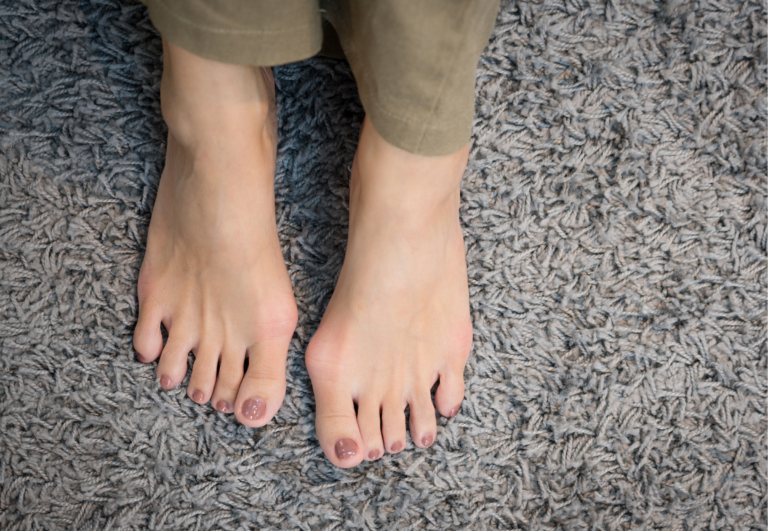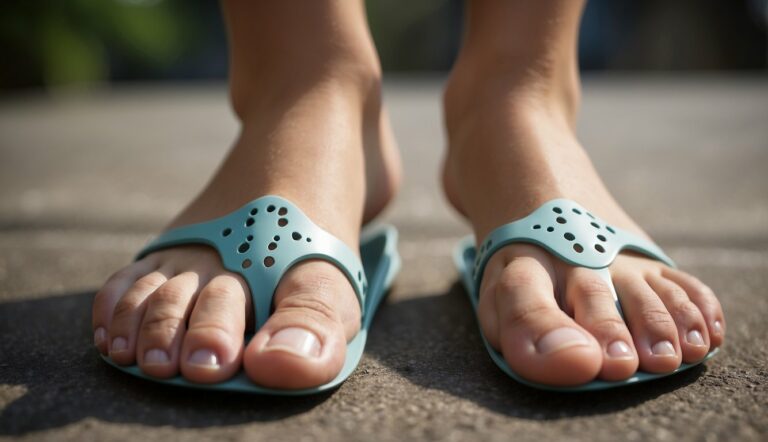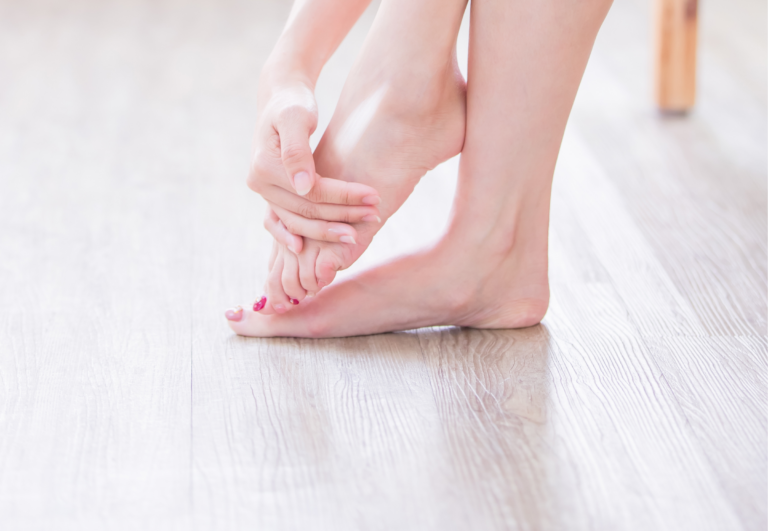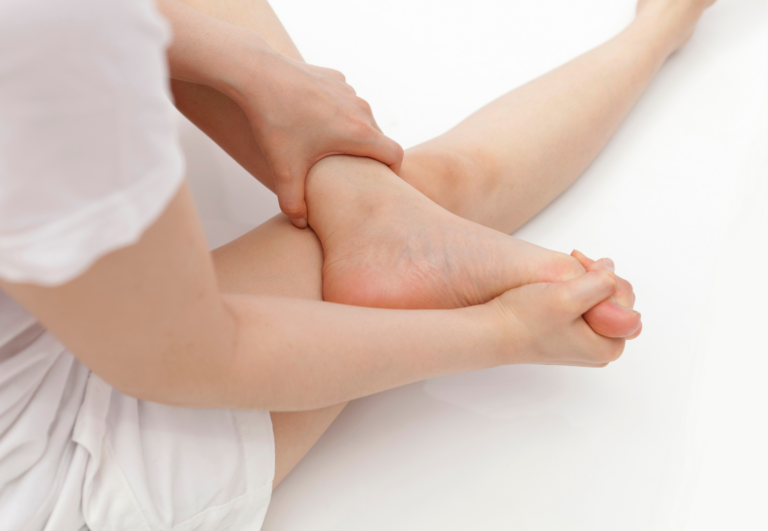How Toe Spacers Can Strengthen Feet: Unveiling the Potential Benefits
Toe spacers can be a game-changer for individuals looking to enhance their foot health and strength. As someone who has extensively used toe spacers, I can attest to the potential benefits of integrating them into a routine. These simple devices, designed to separate the toes, can create the space needed for proper toe alignment, leading to improved balance and support.
Regular use of toe spacers may contribute to stronger foot muscles, thereby enhancing overall foot function. Correct toe alignment fostered by spacers is crucial, as our toes are the foundation that supports the entirety of our body’s balance and movement. Addressing issues caused by tight footwear and promoting a more natural toe spread can lead to noticeable improvements in foot resilience.
Incorporating toe spacers into your regimen could increase foot stability, an essential aspect of daily activities such as walking and running. By training the feet to maintain proper alignment, toe spacers encourage a more robust foot structure, which is a key component of athletic performance and foot health maintenance. Keep in mind, while I share my positive experiences, individual needs vary and consulting a foot specialist before starting new foot care practices is always recommended.
The Anatomy of the Foot and Toe Spacers
Recognizing the structure of the foot is essential for understanding how toe spacers may promote stronger, healthier feet. By maintaining proper toe alignment, these simple devices can enhance foot mechanics and reduce the likelihood of various foot conditions.
Understanding Foot Mechanics
The foot is a complex structure comprising bones, muscles, ligaments, and arches, all working in unison to provide support, balance, and mobility. My experience tells me that the toes play a crucial role in this system; they help distribute weight evenly and assist in our ability to walk and run. Misalignment of the toes can disrupt this balance and may lead to unnecessary strain on specific foot muscles and ligaments.
- Bones: 14 phalanges in the toes, 5 metatarsals and various tarsal bones form the fundamental structure.
- Muscles: Intrinsic and extrinsic muscles control toe movement and stabilize the foot.
- Archs: Serve as the foot’s shock absorbers and adapt to different surfaces.
- Ligaments: Connect bones and facilitate proper joint movement.

Role of Toe Spacers in Foot Health
Toe spacers target the alignment of the toes. By separating the toes, they aim to restore the natural position of the foot structure. In my experience, regular use of toe spacers can lead to strengthened foot muscles, which might improve overall foot function and balance. Here’s how toe spacers can impact various aspects of foot health:
- Alignment: They encourage toes to spread naturally, which may prevent or alleviate overlapping or crowding.
- Foot Conditions: By improving alignment, they can also reduce the risk of bunions, corns, and blisters.
- Muscle Strengthening: They allow the intrinsic muscles of the feet to engage more fully, potentially leading to improved muscle tone and stability.
- Ligament Health: Proper toe alignment may alleviate stress on the ligaments, preventing overstretching or injury.
These benefits underscore the importance of proper foot care, and toe spacers may offer a simple solution to support the intricate dynamics of the foot’s anatomy.
Benefits of Toe Spacers for Common Foot Ailments
Toe separators have a key role in managing and enhancing foot health, particularly by addressing common issues like bunions, hammertoes, plantar fasciitis, and corns. By realigning toes and reducing pressure, they can provide significant relief and prevent further complications.
Relief from Bunions and Hammertoes
Bunions — A bunion, an often painful deformity of the big toe joint, can develop due to pressure and misalignment. I find that using toe spacers consistently helps in gently realigning the big toe and decreasing the pressure on the joint, which often leads to a relief in discomfort.
Hammertoes — Similarly, for a hammertoe, which is a condition where a toe has an abnormal bend in the middle joint, toe spacers work by maintaining a more natural toe alignment, thus reducing the strain and pain associated with this condition.
Managing Plantar Fasciitis and Corns
Plantar Fasciitis — Toe spacers can assist those with plantar fasciitis by encouraging proper foot positioning, which, in my experience, can indirectly help in easing heel pain through improved foot mechanics.
Corns — For corns caused by toe friction and pressure, toe spacers prevent the rubbing that leads to the thickened skin, thereby offering relief and reducing the chance of corn formation.
Prevention of Overlapping Toes and Blisters
Overlapping Toes — Using toe spacers helps in preventing the overlapping of toes, which can lead to issues such as blisters and irritation. I’ve seen how maintaining toe separation prevents such complications.
Blisters — By keeping toes apart and reducing friction, toe spacers minimize the risk of blister formation, ensuring that toes have enough space even in tighter shoes.
Enhancing Athletic Performance and Balance
Toe spacers are designed to promote natural toe alignment, which can lead to improved balance and stability—key aspects of athletic performance. Athletes across disciplines, including running, yoga, and CrossFit, can benefit from the proper use of toe spacers.
Toe Spacers and Athletic Shoes
When it comes to athletic footwear, many shoes do not accommodate the natural spread of the toes. This can lead to compressed toes, reduced circulation, and suboptimal foot mechanics. By incorporating toe spacers into one’s routine, athletes can counteract these issues. The spacers work to realign the toes, allowing for better distribution of weight across the foot. This can be particularly beneficial for runners and CrossFit enthusiasts who require footwear that supports natural foot movement for a wide range of activities.
Ideal Toe Spacer Usage for Different Athletic Shoes:
- Running Shoes: Use toe spacers during warm-ups or cool-downs to allow toes to spread naturally.
- CrossFit Shoes: With varied movements, toe spacers can promote mid-workout recovery and proper toe alignment.
- Yoga Footwear: Wearing toe spacers can help maintain natural toe splay during barefoot practices.
Stability and Gait Improvements
Stability and gait are interconnected, and both are essential for any athletic performance. Improved toe alignment from using toe spacers can positively affect one’s gait, which in turn enhances stability. This is crucial for athletes who engage in sports that demand precise foot placement and balance, such as in yoga poses. Moreover, correct toe spacing can contribute to a more even distribution of body weight, which aids in maintaining balance during dynamic movements and may help prevent falls and injuries.
Benefits of Toe Spacers for Stability and Gait:
- Balance: Promotes even weight distribution and helps improve overall balance.
- Gait: Encourages natural walking and running patterns, leading to smoother motion.
- Foot Strength: May foster intrinsic foot muscle development, offering greater support and stability.
Choosing the Right Toe Spacers
When selecting toe spacers for foot strength, it’s critical to consider the materials used and the proper sizing for the best fit. These factors influence the comfort, effectiveness, and durability of the toe spacers.
Materials and Types of Toe Spacers
Toe spacers commonly come in gel or silicone varieties. Gel toe separators are soft and flexible, providing comfort and ease of use. Silicone, and often medical grade silicone, is a popular choice due to its durability and hypoallergenic properties.
- Silicone: Durable, hypoallergenic, often used in medical-grade products.
- Gel: Softer and more flexible, generally more comfortable for extended wear.
Sizing and Fit Considerations
The size of toe spacers is crucial; too tight and they can restrict circulation, too loose and they won’t be effective. Most toe spacers are one-size-fits-all but check the product specifications to ensure a good fit for your feet.
- Measurement: Accurately measure your toes to match the product dimensions.
- Adjustability: Look for toe spacers that allow for some adjustability to tailor the fit.
Incorporating Toe Spacers into Daily Routines

In my experience, incorporating toe spacers into daily routines is straightforward and can enhance foot comfort and flexibility. The focus lies on exercises for strengthening the feet and maintaining alignment and posture during various activities.
Exercises for Strengthening Feet
Toe spacers are beneficial when performing exercises specifically aimed at strengthening the intrinsic muscles of the feet. A simple exercise I often recommend is:
- Toe Presses:
- Begin with: Having your feet flat on the ground.
- Steps:
- Raise your toes while keeping the spacers in place.
- Hold the position for 5 seconds.
- Lower your toes back down.
- Repetitions: Repeat 10 times, for 2-3 sets.
Integrating toe spacers into these exercises can lead to improved flexibility and a return to the natural position of your toes over time.
Alignment and Posture During Walking and Exercises
While walking and during standard exercises, toe spacers help maintain proper foot alignment and posture. Consider the following when using toe spacers during these activities:
- Walking: Ensuring that the toe spacers are comfortably placed, I focus on the heel-to-toe motion. This promotes a more natural gait and reduces the risk of compensatory movements that can lead to misalignment.
- During Exercises: Whether it’s yoga or resistance training, I advise keeping the toe spacers in situ to encourage the feet to maintain their natural alignment. This can reduce undue stress on the foot structure and improve overall posture during the movement.





